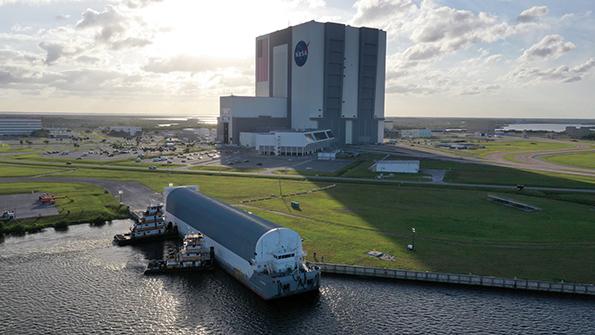
CAPE CANAVERAL—NASA is separating its Human Exploration and Operations (HEO) mission directorate into two new directorates, one to oversee its operational programs while the other focuses on programs in development, Administrator Bill Nelson announced Sept. 21.
Kathy Lueders, previously associate administrator for HEO, will lead the new Space Operations mission directorate, with responsibilities for launches, inflight operations, the International Space Station (ISS), development of the space economy and upcoming lunar operations.
James Free, previously director of NASA’s Glenn Research Center in Ohio, returns to NASA to serve as associate administrator of the newly created Exploration Systems Development mission directorate, charged with defining and managing systems development for Artemis lunar exploration initiatives and integrating those plans with exploration blueprints for Mars.
“Creating two separate mission directorates ensures these critical areas have focused oversight,” Nelson told employees during a town hall. “This reorganization … is about setting up NASA for success.”
NASA already has several programs underway to support the Artemis program, including the Space Launch System (SLS) rocket, Orion deep-space capsule, lunar-orbiting Gateway outpost, next-generation spacesuit development and the Human Landing System to carry astronauts between the Gateway and the surface of the Moon. Under the reorganization, responsibility of those programs shifts to Free.
“We have more programs, leading to a sustained presence on the Moon and Mars, that will require development,” deputy administrator Pam Melroy said. “The Exploration Systems Development directorate will own that architecture for Moon-to-Mars and be responsible for the systems development portion of each capability of that architecture.”
NASA’s goal is to align its organizational structure to better handle the growth of operations in low Earth orbit while keeping a clear focus on development for future deep-space exploration. “In the past decade, we’ve seen what happens when NASA sets the vision for the future—we get incredible innovation, incredible gains for economy and incredible success,” Melroy said.
With the foundations for Artemis in place and the first SLS being prepared for launch at Kennedy Space Center, Melroy said, “This is exactly the time for us to take a deep breath and say, ‘Wow, we have a change in development programs, [it is] no longer one monolithic program. How are we going to manage this huge change in scope?’
“We’ve learned a lot in the last decade and the future is starting to emerge much more clearly,” she added. “The [organizational] change is going to help us manage this growth in scope.”
The restructuring, which does not impact the responsibilities and missions of NASA field centers, is effective Sept. 21.
In the current fiscal year, which ends Sept. 30, NASA allotted about half of its $23 billion budget to human spaceflight programs, including $6.6 billion for development of the SLS, Orion, the lunar Gateway, HLS and other systems. The agency spent about $4 billion for operational programs, including the ISS and the Commercial Crew and Cargo programs.
NASA declined to comment about how it plans to divide personnel and budgets between the two new directorates. “At this time, we’re only announcing that we will establish the two new directorates and who will lead them,” press secretary Jacqueline McGuinness wrote in an email to Aerospace DAILY.
